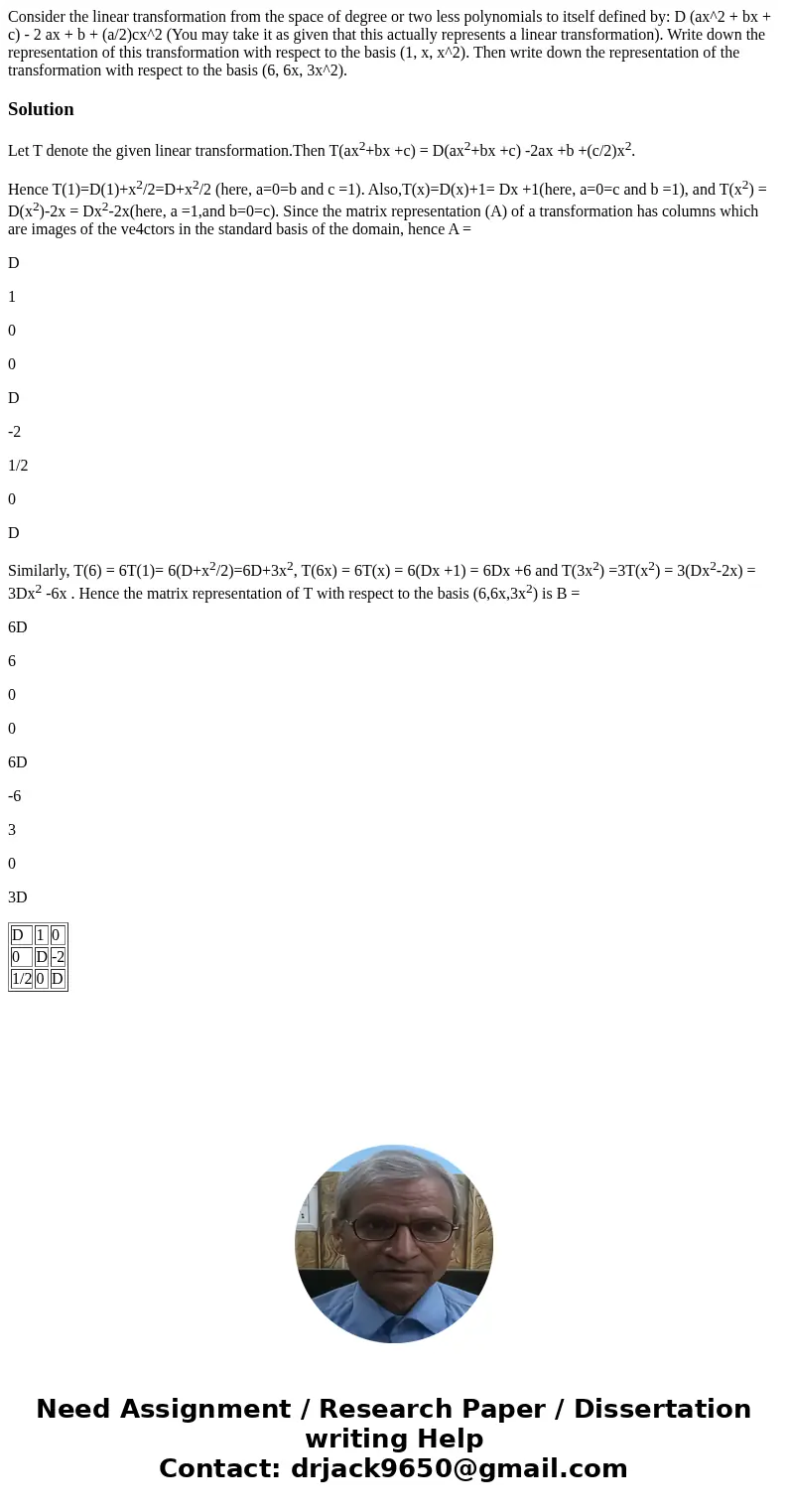Consider the linear transformation from the space of degree
Consider the linear transformation from the space of degree or two less polynomials to itself defined by: D (ax^2 + bx + c) - 2 ax + b + (a/2)cx^2 (You may take it as given that this actually represents a linear transformation). Write down the representation of this transformation with respect to the basis (1, x, x^2). Then write down the representation of the transformation with respect to the basis (6, 6x, 3x^2).

Solution
Let T denote the given linear transformation.Then T(ax2+bx +c) = D(ax2+bx +c) -2ax +b +(c/2)x2.
Hence T(1)=D(1)+x2/2=D+x2/2 (here, a=0=b and c =1). Also,T(x)=D(x)+1= Dx +1(here, a=0=c and b =1), and T(x2) = D(x2)-2x = Dx2-2x(here, a =1,and b=0=c). Since the matrix representation (A) of a transformation has columns which are images of the ve4ctors in the standard basis of the domain, hence A =
D
1
0
0
D
-2
1/2
0
D
Similarly, T(6) = 6T(1)= 6(D+x2/2)=6D+3x2, T(6x) = 6T(x) = 6(Dx +1) = 6Dx +6 and T(3x2) =3T(x2) = 3(Dx2-2x) = 3Dx2 -6x . Hence the matrix representation of T with respect to the basis (6,6x,3x2) is B =
6D
6
0
0
6D
-6
3
0
3D
| D | 1 | 0 |
| 0 | D | -2 |
| 1/2 | 0 | D |

 Homework Sourse
Homework Sourse